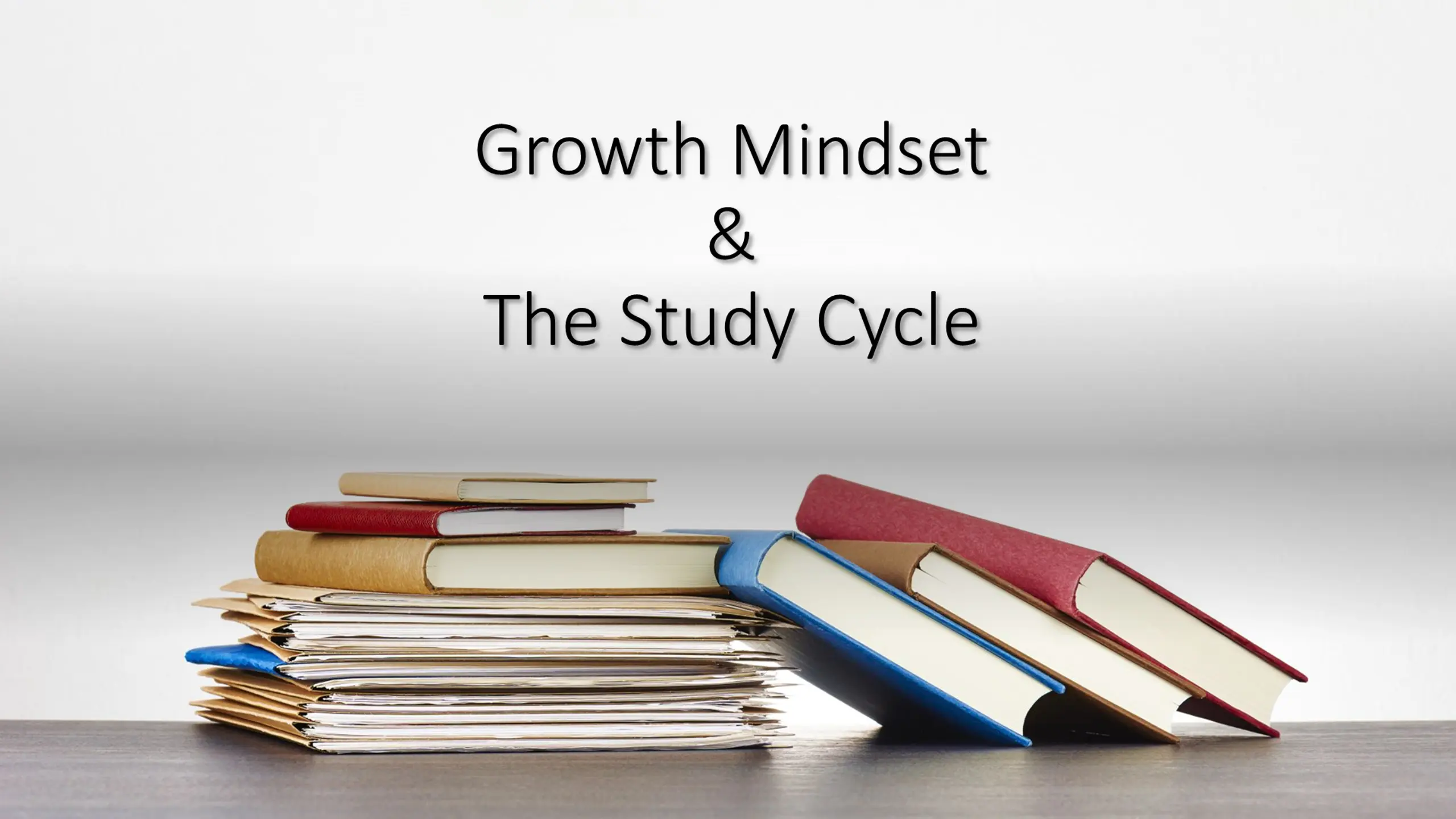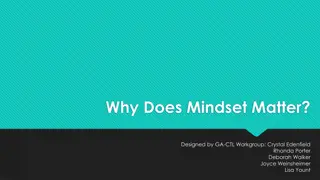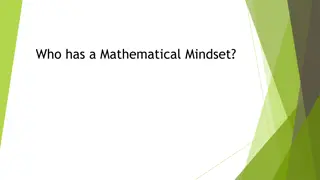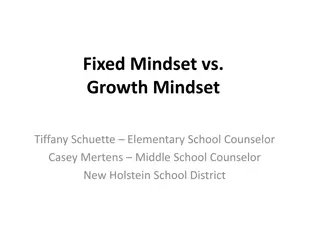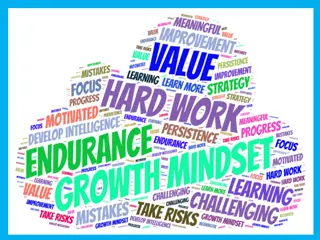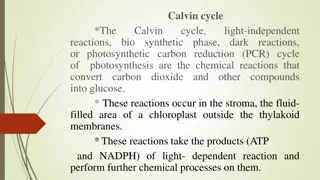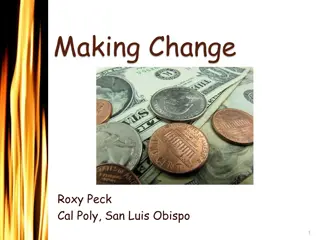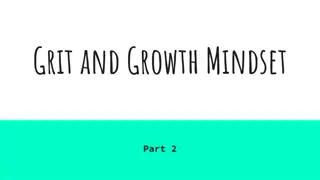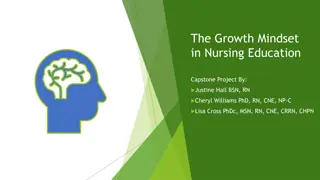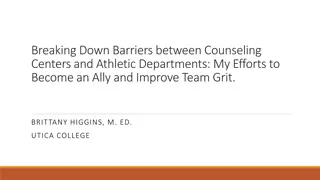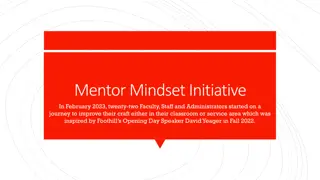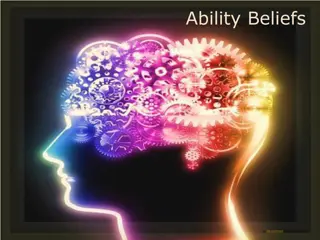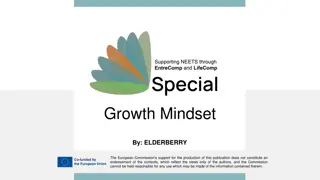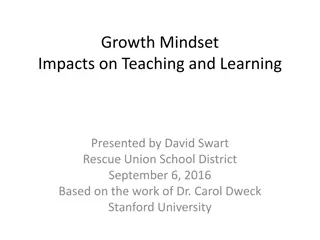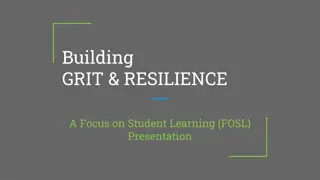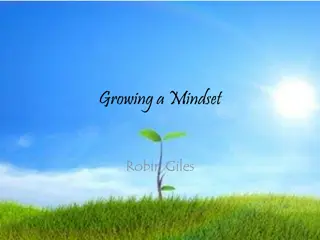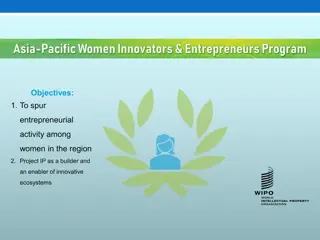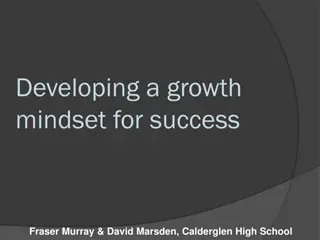Growth Mindset & The Study Cycle
Explore the difference between studying and learning, the impact of grades on learning, benefits and challenges of peer studying, and the power of metacognition. Discover how Bloom's Taxonomy can help you as a student. Develop efficient learning strategies and improve your academic performance.
Download Presentation

Please find below an Image/Link to download the presentation.
The content on the website is provided AS IS for your information and personal use only. It may not be sold, licensed, or shared on other websites without obtaining consent from the author.If you encounter any issues during the download, it is possible that the publisher has removed the file from their server.
You are allowed to download the files provided on this website for personal or commercial use, subject to the condition that they are used lawfully. All files are the property of their respective owners.
The content on the website is provided AS IS for your information and personal use only. It may not be sold, licensed, or shared on other websites without obtaining consent from the author.
E N D
Presentation Transcript
Growth Mindset & The Study Cycle
Group Roles: 1. Time 2. Notes 3. Equality 4. Questions 5. Report
Breakout Rooms 1. What is the difference between studying and learning? Where does studying/learning occur? Which is harder? 2. What did you vs. your teacher do before tests in high school? How did you prepare? How did the teacher prepare you? 3. How do grades impact your learning as a student? What are the benefit of grades? What are the challenges? 4. What are the benefits of working with your peers to study? What are the challenges?
What is the difference between studying and learning?
In high school, what did most of your teachers do the day before a test? How well did you do on those tests? Which were hardest? What did you do during class on the day before the test? What grade would you get on the test if you only attended the day before the test?
Peer Studying: Benefits & Challenges
Metacognition = Expert Learner Metacognition = Expert Learner The ability to think about thinking Being consciously aware of yourself as someone who has a problem to solve Monitoring and controlling your own mental processing Being aware of the type of learning you re expected to do
POLL TIME
Up until this point, have you been in make an A mode, or teach the material mode?
The power of peer teaching We find out what we don t know as well as we imagined Anticipating questions Multiple perspectives Different levels of learning
Goldilocks and Blooms Levels 1. REMEMBER: What three items in the bears house did Goldilocks interact with? 2. UNDERSTAND: Paraphrase the story of Goldilocks (to a specific audience) 3. APPLY: The bears items corresponded to which 3 parts of the house? 4. ANALYZE: Why did Goldilocks enter a bear s cottage in the first place? 5. EVALUATE: Which of the following scenarios is Goldilocks more likely to prefer? 6. CREATE: Design a Goldilocks story for the 21stcentury.
How can Blooms Taxonomy help you as a student?
Counting vowels in 45 seconds Counting vowels in 45 seconds COUNT ALL THE VOWELS IN THE WORDS ON THE NEXT SLIDE AEIOU (NO Y)
Dollar Bill Dice Tricycle Four-leaf Clover Hand Six-Pack Seven-up Octopus Cat Lives Bowling Pins Football Team Dozen Eggs Unlucky Friday Valentine s Day Quarter Hour
How many words or phrases do you remember?
Lets look at the words again How are they arranged? Is there a pattern?
Dollar Bill Dice Tricycle Four-leaf Clover Hand Six-Pack Seven-up Octopus Cat Lives Bowling Pins Football Team Dozen Eggs Unlucky Friday Valentine s Day Quarter Hour
Now, how many words and phrases do you remember?
What are the differences between the first and second attempts? We knew what the task was We knew how the information was organized
Do Do think aloud exercises Ask Constantly ask why and what if questions about the material Turning yourself into an efficient learner Test Test your understanding by verbalizing or writing about concepts Practice Practice retrieval of information Rise Move your activities higher on the Bloom s scale Check Check your assignments for Bloom s keywords
Use the study cycle: Preview Attend Review Study Assess Operating at different levels
Solve problems without looking at the example first Solve Memorize basic information so you don t have to look it up Memorize How to use metacognition effectively Ask Ask how, why, and what if questions Spend time reviewing each day (even 5-8 minutes while driving/walking) Review
The Statistics: Students who do not use metacognitive and study strategies average 30% lower scores on assignments and tests Students who start metacognition during a semester can generally increase their scores by 15%
What can you do now? If you don t start it within the next 48 hours, you probably never will
To do this week: WEEK 1 REMAINDER: Submit initial discussion post (due tonight) Reply to peers before Sunday Quiz on Leamnson article WEEK 2: Preview content Check-in Quiz Monday
